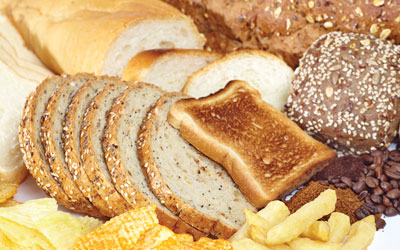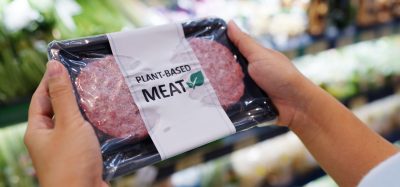Potential health risks related to the presence of acrylamide in food: the EFSA’s risk assessment
- Like
- Digg
- Del
- Tumblr
- VKontakte
- Buffer
- Love This
- Odnoklassniki
- Meneame
- Blogger
- Amazon
- Yahoo Mail
- Gmail
- AOL
- Newsvine
- HackerNews
- Evernote
- MySpace
- Mail.ru
- Viadeo
- Line
- Comments
- Yummly
- SMS
- Viber
- Telegram
- Subscribe
- Skype
- Facebook Messenger
- Kakao
- LiveJournal
- Yammer
- Edgar
- Fintel
- Mix
- Instapaper
- Copy Link
Posted: 28 October 2015 | Diane Benford, Head of Risk Assessment at the UK Food Standards Agency / Peter Fürst, Director of the Chemical and Veterinary Analytical Institute in Münster / Luisa Ramos Bordajandi Scientific Officer, Unit on Biological Hazards and Contaminants, EFSA | No comments yet
Acrylamide is a chemical that naturally forms in starchy food products during every-day high-temperature cooking, such as frying, baking, roasting and also industrial processing usually above 120°C and low moisture. In view of the known toxic effects, the discovery of its presence in certain foods stimulated new research studies on its toxicity, on the influence of processing on the acrylamide levels in food, and on possible mitigation measures. The European Food Safety Authority (EFSA) has performed a risk assessment concluding that acrylamide in food potentially increases the risk of developing cancer for consumers in all age groups.


Acrylamide (CH2=CHCONH2) is a low molecular weight, highly water soluble, organic compound, that is used among others, as an industrial chemical. Heightened concerns about human exposure to acrylamide arose in 2002 when it was discovered that it forms in certain foods during every-day high-temperature cooking, such as frying, baking, roasting and also industrial processing at temperatures usually above 120°C and low moisture. As it forms in numerous baked or fried carbohydrate-rich foods, including French fries, potato crisps, breads, biscuits and coffee, there is widespread human exposure. Several pathways and precursors have been proposed to contribute to the acrylamide formation in food, the main formation mechanisms being the reaction of the free amino acid asparagine with reducing sugars that are naturally present in many foods, via the Maillard reaction.
The toxicological properties of acrylamide had been well studied and included neurotoxicity, genotoxicity, carcinogenicity and reproductive toxicity. In 1994 the International Agency for Research on Cancer (IARC) classified acrylamide as a Group 2A carcinogen (probably carcinogenic to humans). In view of the known toxic effects, the discovery of its presence in certain foods stimulated new research studies on its toxicity, on the influence of processing on the acrylamide levels in food, and on possible mitigation measures.
Since 2007 the European Commission has recommended Member States to monitor the levels of acrylamide in foods known to contain high levels and/or contribute significantly to human exposure, and has set ‘indicative values’ for acrylamide in various foodstuffs. These are not safety thresholds or legal limits, but only intended to indicate the need for an investigation if the values are exceeded in order to explore whether appropriate measures have been taken to control the acrylamide formation.
In 2012, and in order to identify the need for further measures regarding acrylamide in food, the European Commission requested EFSA to assess the risks for human health related to the presence of acrylamide in food taking into account the most recent toxicological studies and occurrence data available.
The EFSA’s risk assessment: how was it done
Within EFSA, the task of developing the assessment of the risk for human health related to the presence of acrylamide in food was allocated to the Panel on Contaminants in the Food Chain (CONTAM Panel), and a Working Group of external scientific experts was established to develop the draft opinion. The assessment was done following the risk assessment paradigm: hazard identification and characterisation, exposure assessment, and risk characterization.
The exposure assessment combined the data on human consumption available for the different food categories using the EFSA Comprehensive European Food Consumption Database, with the occurrence data on acrylamide in the respective food categories. A range of intake/exposure scenario estimates were considered to also cover specific groups of the population, such as infants and children. In addition, specific scenarios were designed to assess the influence of specific home-cooking behaviours and to reflect preference for particular products and places of consumption on the total dietary exposure to acrylamide. The data on occurrence in food from the EU-wide acrylamide monitoring recommended by the EC were used, and to ensure a human exposure assessment as comprehensive as possible, acrylamide occurrence data collected outside official controls, e.g. by industry or food associations were also included.
To characterise what are the critical adverse health effects caused by acrylamide in experimental animals and humans, i.e. the hazard identification and characterization, EFSA considered toxicological, toxicokinetic and epidemiological studies available in the open literature until the adoption of the opinion.
Before the finalisation of the risk assessment, EFSA publicly consulted on its draft risk assessment, and held a stakeholder meeting with the contributors to the public consultation. Overall, EFSA received 120 comments from various interested parties including national agencies, academia, industry and individuals in their private capacity. These comments allowed EFSA’s experts to refine aspects of its assessment, and the final document was published in June 20156.
Main outcomes
The assessment of the dietary exposure resulted in mean dietary exposure estimates that ranged from 0.4 to 1.9µg/kg body weight (b.w.) per day, and from 0.6 to 3.4µg/kg b.w. per day at the 95th percentile of exposure. The most important food groups contributing to acrylamide exposure varied by age group: for infants, baby foods, processed cereal-based baby foods (mainly rusks and biscuits) and other products based on potatoes were the main contributors, while for children and adolescents were potato fried products, soft bread, breakfast cereals, biscuits, crackers and crisp bread. These food groups were also the main contributors for adults together with coffee. Preferences in home-cooking (e.g. conditions of potato frying, preference for particular potato or coffee products) were shown to have a substantial impact on the dietary exposure to acrylamide.
The evaluation of the data in experimental animals indicated that oral exposure to acrylamide can lead to harmful effects on the nervous system, pre- and post-natal development and adversely affect male reproduction. In addition, laboratory animals exposed to acrylamide have shown an increased likelihood of developing gene mutations and tumours. The most likely cause of the genotoxicity and carcinogenicity of acrylamide is glycidamide, its main epoxide metabolite.
Results from human studies have shown no consistent indication of an increased risk for most types of cancer, except for some limited and inconsistent evidence of increased risk for renal cell, endometrial and ovarian cancer. In relation to developmental consequences, two studies have reported an inverse relation between exposure to acrylamide and birth weight and other markers of fetal growth. However, it has not been established whether this association is causal. Studies among workers exposed to acrylamide in the workplace have shown an increased risk of neurological alterations.
EFSA’s conclusions
Since acrylamide and its metabolite glycidamide are genotoxic and carcinogenic, a tolerable daily intake (TDI) could not be set, as any level of exposure to a genotoxic substance could potentially damage DNA and lead to cancer. Instead, EFSA’s experts estimated the dose range within which acrylamide is likely to cause a small but measurable tumour incidence (called “neoplastic” effects) or other potential adverse effects (neurological, pre- and post-natal development and male reproduction). The lower limit of this range is called the Benchmark Dose Lower Confidence Limit (BMDL10).
By comparing the BMDL10 to human dietary exposure to acrylamide, scientists can indicate a “level of health concern” known as the margin of exposure (MOE). The MOE approach provides an indication of the level of health concern about a substance’s presence in food while recognising that it is not possible to quantify the risk. Use of the MOE can help risk managers in defining possible actions required to keep exposure to such substances as low as possible
From this exercise, EFSA’s main conclusions are:
– acrylamide in food potentially increases the risk of developing cancer for consumers in all age groups. This concern applies to all consumers but children are the most exposed age group on a body weight basis. This is in accordance with previous evaluations made by other international bodies7.
– the possible harmful effects of acrylamide on the nervous system, pre- and post-natal development and male reproduction were not considered to be a concern, based on current levels of dietary exposure.
– the ingredients, storage and processing conditions (particularly temperature) greatly influence acrylamide formation in food. Home-cooking choices can have a substantial impact on the level of acrylamide humans are exposed to through the diet.
What comes next?
The risk assessment of EFSA will inform the European Commission and European national decision-makers when weighing up possible measures for further reducing consumer exposure to acrylamide in food. These may include, for example, advice on eating habits and home-cooking, or controls on commercial food production. However, EFSA plays no direct role in deciding such measures.
EFSA also made recommendations to cover gaps identified in the development of the risk assessment, and that could reduce its uncertainties, such as the improvement of the reporting to the acrylamide occurrence data regarding the mode of preparation of the foods before analyses, or the conduction of toxicological and epidemiological studies to confirm or refute some of the results obtained.
Can exposure to acrylamide in food be reduced?
The raw material, the storage method and the processing (e.g. temperature at which food is cooked) can influence the amount of acrylamide formed in different foods. Although it is not possible to totally eliminate acrylamide from food commodities, in the last few years numerous research activities have been carried out to understand the formation mechanism, the influence of various parameters that have a potential impact on the acrylamide levels in food, and the possible mitigation measures to keep the acrylamide concentrations in foods as low as reasonably achievable8,9. In this context, the ‘Acrylamide toolbox’10 has been developed by a cooperation between FoodDrinkEurope (representing the European food and drink industry) and national authorities of the European Union, to investigate pathways of formation of acrylamide and potential intervention steps to reduce its levels in food, and therefore exposure. The aim of the Toolbox is to provide national and local authorities, manufacturers (including small and medium size enterprises) and other relevant bodies, with brief descriptions of intervention steps which may prevent and reduce formation of acrylamide in specific manufacturing processes and products. This tool is not meant as a prescriptive manual, but aims to be a ‘living document’ with a catalogue of tested concepts at different stages that will be updated as new findings are communicated. The latest 2013 toolbox focusses especially on the categories ‘potatoes’, ‘cereals’ and ‘coffee’ which were found to have a higher risk of acrylamide formation. Other international bodies have also developed guidance, such as the US-Food and Drug Administration draft guidance for industry on ‘Acrylamide in Foods’11, that ‘provides information to help growers, manufacturers, and food service operators to reduce acrylamide in certain foods’ suggesting a range of possible mitigation approaches.
While these tools are mainly intended to assist manufacturers, recommendations for measures to reduce the acrylamide concentration in food have been published by national authorities and the food industry primarily addressed to the general population in the context of domestic cooking. Newspapers, journals and the internet provide recommendations, e.g. for frying potato-derived products and toasting at home, sometimes accompanied with punchy slogans, such as ‘gilding rather than charring’.
It should also be noted that acrylamide is present in tobacco smoke, which is, therefore, a non-dietary source of exposure for smokers and non-smokers (through passive smoking). For smokers, tobacco smoking is a more prominent source of acrylamide exposure than food. In addition, due to the wide variety of industrial uses of acrylamide, exposure in the workplace through inhalation or dermal absorption can occur.
Acknowledgements
EFSA wishes to thank the members of the CONTAM Panel mandate 2012-2015 (http://www.efsa.europa.eu/en/contam/contammembers.htm) and the members of the former EFSA Working Group on acrylamide in food (http://www.efsa.europa.eu/en/contam/contamwgs). EFSA and the CONTAM Panel acknowledge all European Competent Authorities and other stakeholders that provided acrylamide occurrence data in food and supported the consumption data collection for the Comprehensive European Food Consumption Database, as well as the EFSA Stakeholder Consultative Platform for the data submitted to EFSA.
References
- Biedermann, M, Biedermann-Brem, S, Noti, A and Grob, K (2002). Methods for determining the potential of acrylamide formation and its elimination in raw materials for food preparation, such as Mitteilungen aus Lebensmitteluntersuchung und Hygiene 93, 653-667.
- Tareke, E, Rydberg, P, Karlsson, P, Eriksson, S and Törnqvist, M (2000). Acrylamide: A cooking carcinogen? Chemical Research in Toxicology 13, 517-522.
- Mottram, DS, Wedzicha, BL and Dodson, AT (2002). Food chemistry: Acrylamide is formed in the Maillard reaction. Nature 419, 448-449.
- Stadler, RH, Blank, I, Varga, N, Robert, F, Hau, J, Guy, PA, Robert, MC and Riediker, S (2002). Food chemistry: Acrylamide from Maillard reaction products. Nature 419, 449-450.
- IARC (International Agency for Research on Cancer). (1994). IARC Monographs on the Evaluations of Carcinogenic Risks to Humans. Volume 60. Some Industrial Chemicals. Acrylamide. Summary of data reported and Evaluation. Last updated: 13 April 1999.
- EFSA CONTAM Panel (EFSA Panel on Contaminants in the Food Chain). (2015). Scientific Opinion on acrylamide in food. EFSA Journal 2015;13(6):4104, 321 pp. doi:10.2903/j.efsa.2015.4104 (http://www.efsa.europa.eu/en/press/news/150604)
- FAO/WHO (Joint FAO/WHO Expert Committee on Food Additives). (2006). Evaluation of certain Food Contaminants. Sixty-fourth report of the Joint FAO/WHO Expert Committee on Food Additives (Rome, 8–17 February 2005). WHO Technical Reports Series 930.
- Pedreschi F, Salome Mariotti, M and Granby, K (2014). Current issues in dietary acrylamide: formation, mitigation and risk assessment. Journal of the Science of Food and Agriculture 94, 9-20.
- Xu, Y, Cui, B, Ran, R, Liu, Y, Chen, H, Kai, G and Shi, J (2014). Risk assessment, formation, and mitigation of dietary acrylamide: Current status and future prospects. Food and Chemical Toxicology 69, 1-12.
- Food and Drink Europe Acrylamide toolbox available at: http://ec.europa.eu/food/food/chemicalsafety/contaminants/ciaa_acrylamide_toolbox09.pdf
- US-FDA. Draft guidance for industry: acrylamide in foods. Available at: http://www.fda.gov/Food/GuidanceRegulation/GuidanceDocumentsRegulatoryInformation/ChemicalContaminantsMetalsNaturalToxinsPesticides/ucm374524.htm
About the authors
Diane Benford is a European Registered Toxicologist, and is Head of Risk Assessment at the UK Food Standards Agency, with overall responsibility for risk assessment of all types of chemicals in food, microbiological risk assessment, and laboratory methods. She was a member of EFSA’s Panel on Contaminants in the Food Chain from 2006 to 2015, and served as Chair of the Panel for the 2012-2015 mandate.
Peter Fürst holds a PhD in Food Chemistry. His main working areas are the analysis and evaluation of environmental and process contaminants, pesticides and pharmaceutical active compounds in food. He is working in official food control since 1981. In 2009, he was appointed Honorary Professor at the Chemical Faculty of the Westphalian-Wilhelms-University in Münster/Germany. Since 2014 he is the director of the Chemical and Veterinary Analytical Institute in Münster. He was a member of EFSAs Panel on Contaminants in the Food Chain and several of its working groups between 2006 and 2015 and served during the last three years as Panel Vice-Chair. He was the chair of the EFSA Working Group on acrylamide in food.
Luisa Ramos Bordajandi holds a PhD in Science and carried out her post-doctoral research on the development of certified reference materials for contaminants in food. In 2008 she joined the European Food Safety Authority (EFSA) and is since then a Scientific Officer at the Unit on Biological Hazards and Contaminants providing support to the Panel on Contaminants in the Food Chain and its Working Groups in the development of risk assessments related to the presence of contaminants in food and feed.








